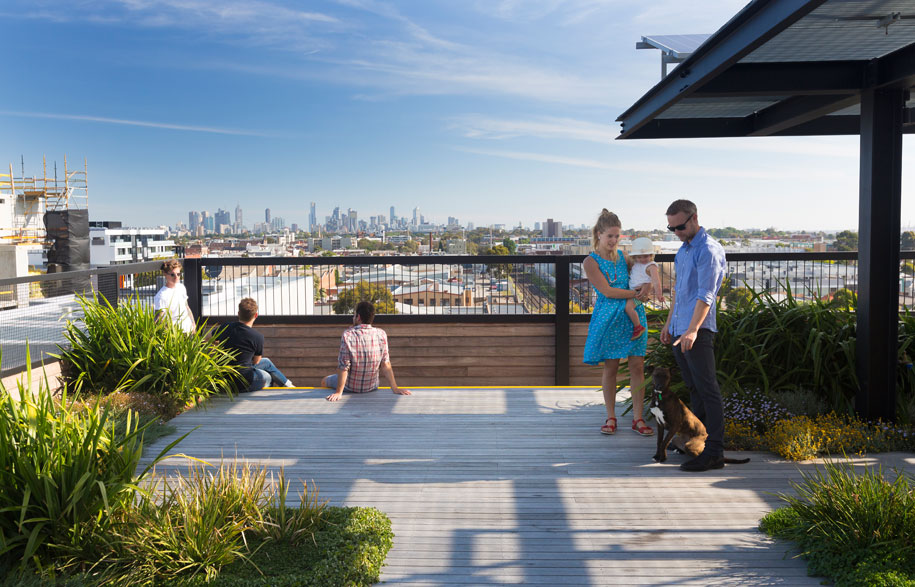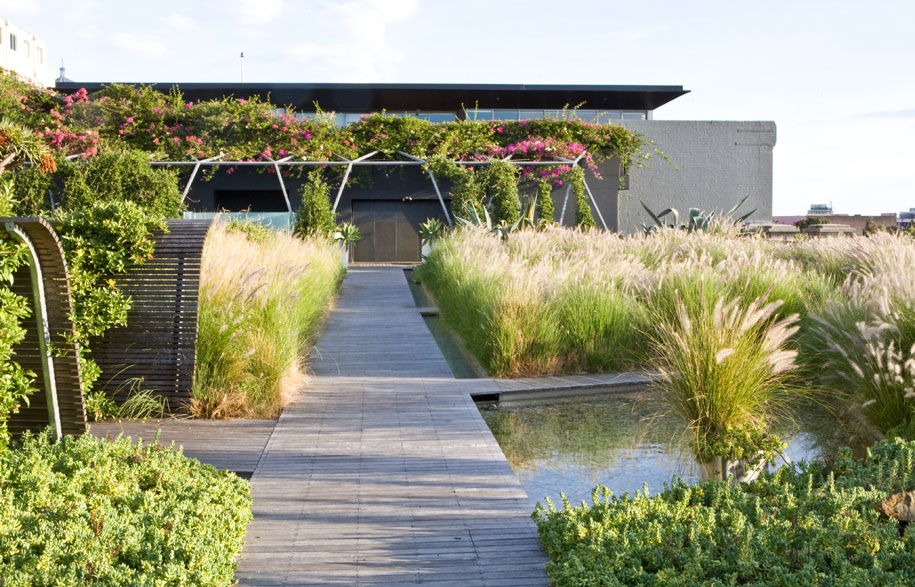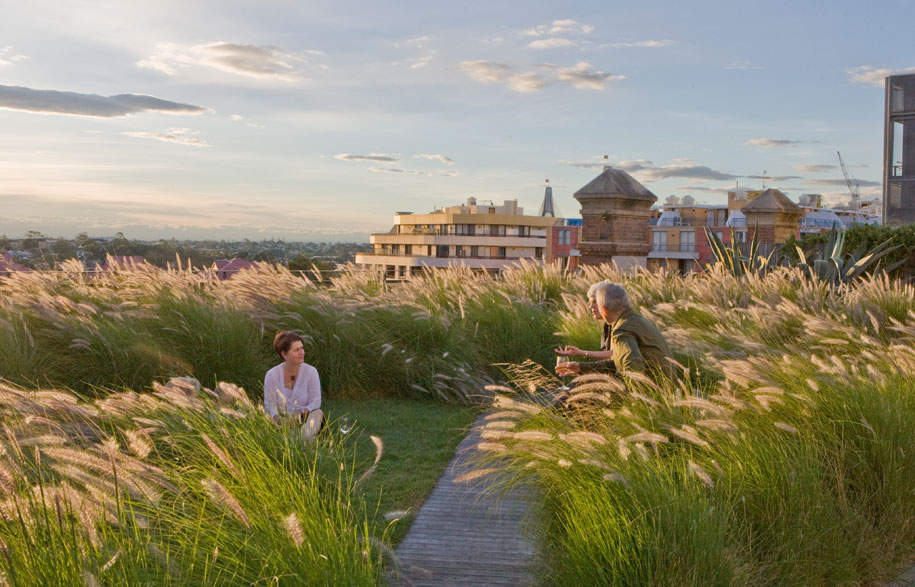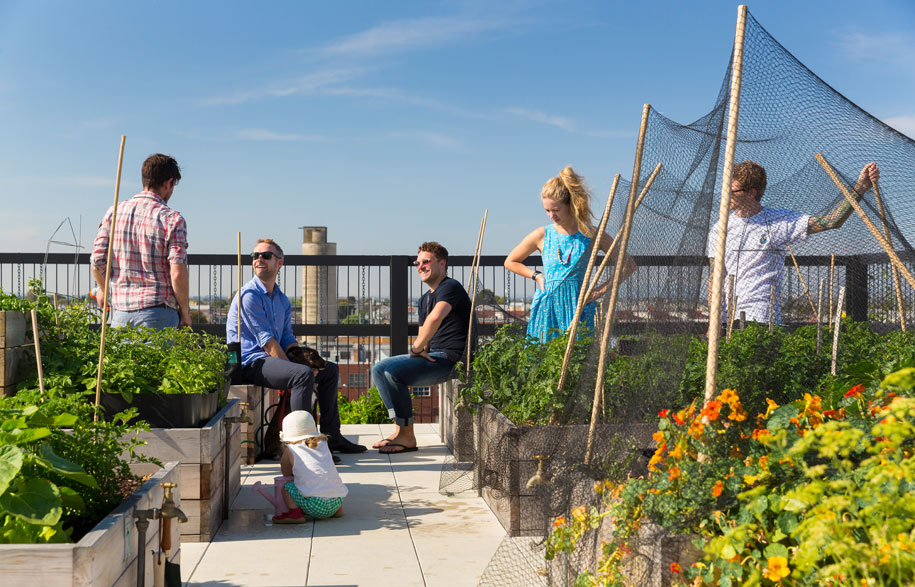Earlier this year, France introduced new legislation requiring all new buildings within commercial zones to be partially covered in plant life or solar panels. The city of Toronto adopted a similar law back in 2009 mandating green rooftops on all new residential and commercial buildings. Incredibly, Switzerland implemented their equivalent agenda in the late-1990s. But despite Australia’s sunny disposition and love of the outdoors, growing a green rooftops culture has struggled to gain momentum.
M Central in Sydney set a benchmark for sustainable living rooftops when it was constructed in 2005. Set six storeys above the bustling streetscape of inner-city Pyrmont, this 3000m2 residential recreation space is the work of landscape architects 360°. Creating the “antithesis of a tiled rooftop terrace with a pool and some pots” atop the heritage-listed woolstore, the studio utilised the vast scale to sculpt a diversity of spaces and a genuine sense of landscape. “We were inspired by European common gardens where people have both private respite and chance interactions with other residents – a vital factor in developing a sense of community amongst residents,” principal Daniel Baffsky says. “This lead to the concept of the landscape as an island in the sky, with floating timber pathways, daybeds and pocket lawns set in a sea of grasses. We also used the split level to introduce water for ambient cooling.”
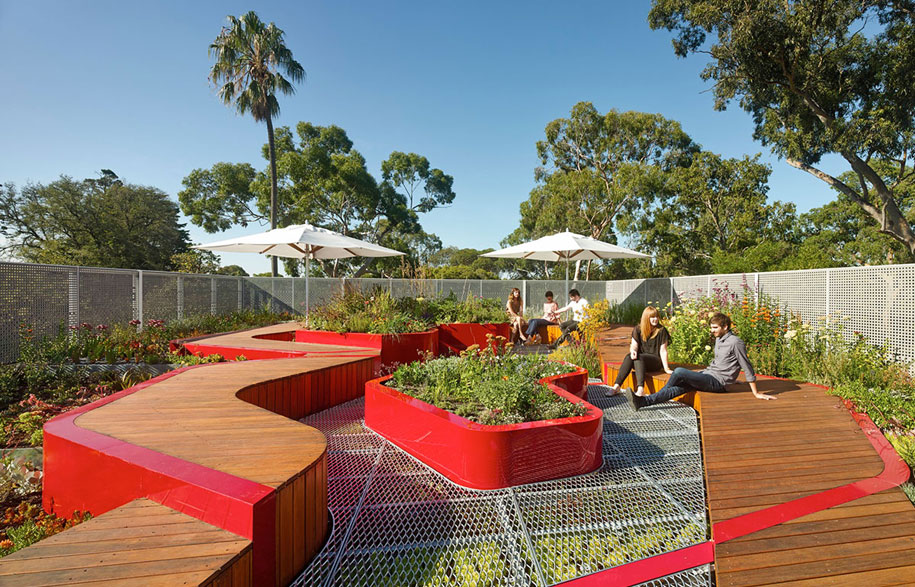
Green rooftops act in alleviating the urban heat island effect – where heat-absorbing building materials trap heat within a city, causing excessive rises in temperature compared to outer-lying suburbs. By reflecting rather than absorbing heat, green walls and rooftops cool buildings, reducing reliance on air-conditioning and overall energy consumption. These urban canopies can also be designed to capture precious rainfall, minimising stormwater run-off and filtering it through the building’s plumbing channels. The soil of the garden beds then stores excess moisture, while the trees absorb radiation and reduce pollutants in the air. As well as attracting bees, birds and other insects, the sky garden offers a place for urban dwellers to connect with nature and potentially grow their own food, improving health and wellbeing.
Shaping such a space for quiet respite, social connectedness and growing food was among Breathe Architecture’s intentions with the rooftop garden at The Commons. The shared set of ethics and values between both architect and residents has driven the design of this multi-residential development, resulting in pared-back, mindful living quarters supported by communal amenities and spaces. “The idea of the rooftop is that it’s meant to be a place for the community to gather. It gives the ‘Commoners’ the ability to come together in smaller or larger groups when they’re feeling social, but also gives them an opportunity to be more recessive, sitting quietly in a corner to read a book on their own,” says Jeremy McLeod. “As Melbournians, we’re looking at a drastically increasing population over time. So in this more urbanised city, I think the simple choice of adding vegetation to the rooftop of every building is key to simple things like biodiversity, but also biophilic design, and connecting humans back with nature is really important.”

While the City of Melbourne and City of Sydney have both made efforts to release guides to greening their local built environments through roofs, walls and facades, a larger unifying agenda is yet to transpire. Junglefy founder and horticulturalist Jock Gammon worked with French botanist Patrick Blanc to deliver one of the world’s tallest vertical gardens as part of One Central Park in Sydney – its green veil comprising 38,000 indigenous and exotic plants. He says going forward we need to think past green walls and rooftops to a broader scale of plant integration within urban architecture. “I think it’s about making green infrastructure more functional. Rather than a garden just looking good, can it be used to treat water? Can it be used to clean air? Thinking beyond the amenity for the building owners and the public, and installing a garden for biodiversity, stormwater management and to combat the urban heat island effect,” Gammon says.
While there are challenges of structural capacity, waterproofing, drainage and plant selection to consider, it’s in pairing these environmental and social sustainability intents that a common sense approach to shaping more liveable cities arises – drawing on those benefits of nature and resituating them within the urban context.
